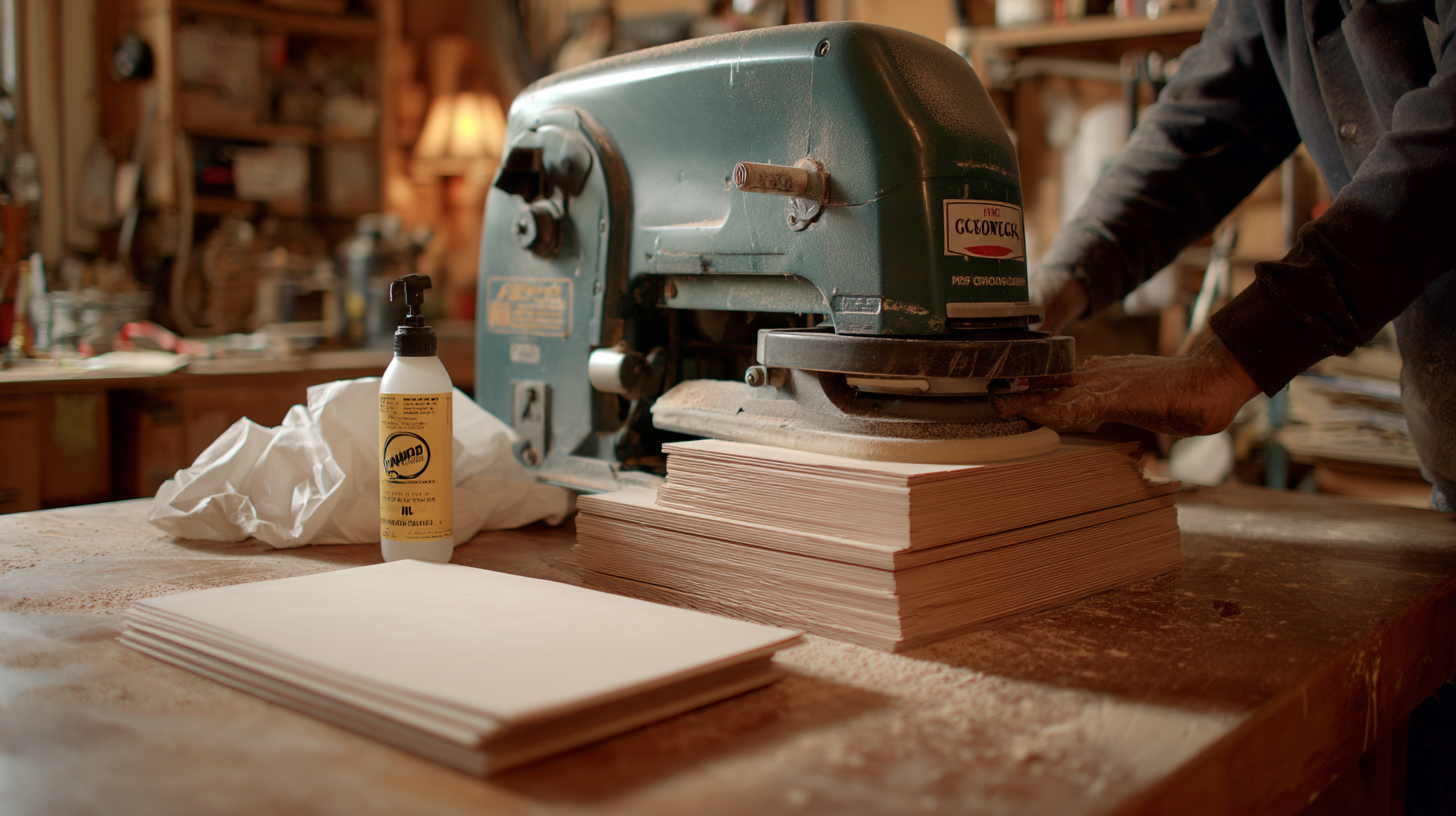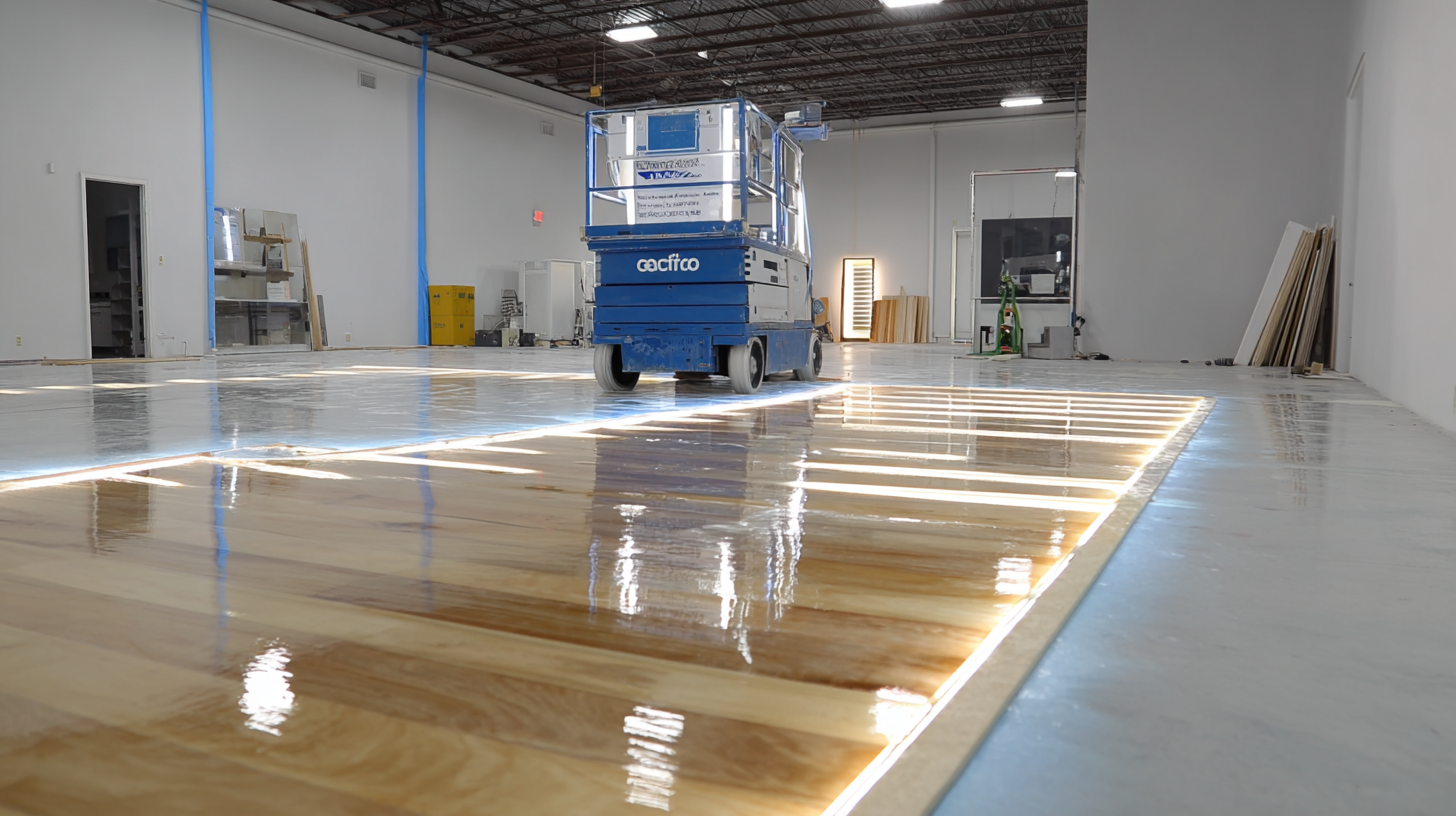FREE SHIPPING ON ALL BUSHNELL PRODUCTS
Leave Your Message
In the realm of flooring renovation and maintenance, the importance of selecting the right **Floor Sander Sheets** cannot be overstated. According to a report by the National Wood Flooring Association (NWFA), the global market for professional flooring solutions is projected to grow significantly, with an increasing emphasis on quality and efficiency. Various types of floor sander sheets cater to different materials and finishing needs, each designed for specific applications such as hardwood, laminate, or concrete surfaces. The right sheet not only enhances the sander's performance but also impacts the overall finish and longevity of the floor. By understanding the characteristics and applications of each type of floor sander sheet, users can optimize their sanding processes and achieve superior results. This blog will explore the various types of these sheets, their suitable applications, and provide a comprehensive guide on how to choose the best option for your flooring projects.

When it comes to floor sanding, the choice of sandpaper material can significantly impact the quality and longevity of the job. Different materials like aluminum oxide, garnet, and silicon carbide offer distinct advantages and disadvantages. Aluminum oxide, for example, is widely recognized for its durability and is suitable for both hardwood and softwood flooring. Data indicates that sandpaper made with aluminum oxide can last up to 10 times longer than traditional garnet paper, making it a popular choice among professionals and DIY enthusiasts alike.
On the other hand, garnet is often favored for its sharpness and ability to provide a smoother finish, particularly on softer woods. While it may wear out more quickly than aluminum oxide, many users appreciate the quality of finish it offers. Silicon carbide, known for its fast cutting capabilities, is ideal for sanding materials such as concrete and fiberglass, although it is less common in typical floor sanding applications. Ultimately, understanding these materials and their lifespans can help users make informed decisions, ensuring they choose the right floor sander sheets for their specific project needs.
When it comes to achieving the best results with floor sanders, understanding grit levels is crucial. Grit levels, which indicate the coarseness or fineness of sanding sheets, directly influence sanding performance and the finished surface quality. Lower grit numbers, such as 36 or 60, are ideal for heavy material removal and initial sanding of rough surfaces. These aggressive grits strip away old finishes and smooth out uneven spots, making them essential for prepping hardwood floors.
Conversely, higher grit levels, like 120 or 220, enable a finer finish and are best suited for the final sanding stages. They help eliminate scratches left by coarser grits and allow for a smoother surface that enhances the natural beauty of the wood. When choosing grit levels, it’s important to consider the wood type, the condition of the floor, and the desired finish. A strategic approach to grit selection can greatly affect the efficiency of the sanding process and the overall quality of the floor, ensuring a superb end result.

When it comes to choosing the best floor sander sheets, understanding the global production standards can be pivotal. Different brands often employ varying materials and techniques that significantly impact the performance and durability of their sanding sheets.
This side-by-side comparison sheds light on popular brands that dominate the market, highlighting both their strengths and weaknesses.
In our analysis, we explore key aspects such as grit composition, durability, and compatibility with various floor sanding machines. Some brands excel in providing longer-lasting sheets that perform exceptionally well on harder surfaces, while others may offer more economical options that are ideal for lighter tasks.
By examining features such as dust extraction capabilities and the ease of use, we aim to guide consumers in making informed choices based on their specific needs and preferences in floor sanding applications.
When it comes to purchasing floor sander sheets, a common dilemma arises: the balance between cost and quality. While cheaper options may initially seem more appealing, they often compromise performance and longevity. Using low-quality sheets can lead to uneven sanding results, increased time on the job, and ultimately, the need for replacements sooner than anticipated. Therefore, an investment in higher-quality sander sheets can save both time and money in the long run, enhancing the overall flooring result.
Moreover, understanding production standards can be crucial in navigating this cost-quality spectrum. Sander sheets that meet global production standards often use superior materials and technologies, resulting in better performance and durability. This means not only a smoother finish but also less wear on the machinery, leading to fewer repairs and extended equipment life. In essence, finding a balance where quality meets value can transform your floor sanding experience, ensuring a professional finish without breaking the bank.

When considering the purchase of floor sander sheets, user reviews and expert insights play a crucial role in guiding your decision. Users often share their firsthand experiences with various products, highlighting aspects such as durability, cutting efficiency, and overall performance. Testimonials from DIY enthusiasts and professional contractors can reveal which sanders excel in specific projects, such as refinishing hardwood floors or preparing surfaces for finishing. By paying attention to these shared experiences, you can make a more informed choice that aligns with your specific needs.
Expert insights also provide a level of credibility that user reviews alone may lack. Industry professionals often conduct rigorous tests and comparisons, assessing the materials, grit levels, and design features of sander sheets. They identify the best brands and specifications suited to various types of flooring and projects. By combining user feedback with expert opinions, shoppers can filter out subpar products and focus on options that are highly rated for performance and longevity, ensuring a successful result for any sanding task.
